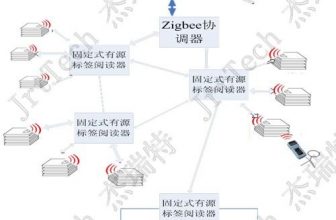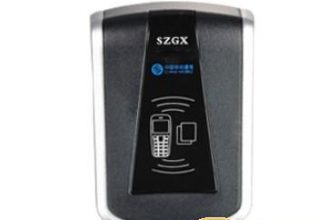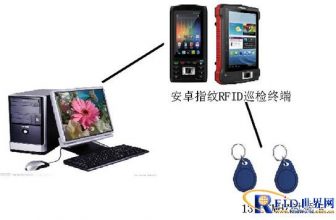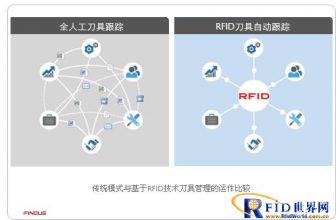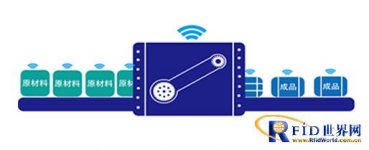
RFID Warehouse Management Solution for Manufacturing Industry
[ad_1]
A program overview
By helping manufacturing companies introduce intelligent warehouse information management solutions based on RFID technology, they can accurately and efficiently process the core business of warehouse management, helping customers to ensure that the entire business process from receiving raw materials to supplying customers is efficient and accurate With the help of the little beeRFIDThe fixed mobile read-write device and application program collect material tracking information, and transmit the information to the database via the network, thereby transforming it into smarter decision-making.
This will greatly shorten the production cycle, reduce manual errors, improve efficiency, help manufacturing enterprises stand out from the market, maintain lean business management and provide intelligent power for continuous development.

Second industry demand
Little bee industry insights found that more small and medium-sized production enterprises have not introduced standardized management in raw material warehouses, semi-finished products warehouses, and finished product warehouses, warehouses do not have a strict division of warehouse locations, and raw materials warehouses and finished product warehouses are stacked in flat warehouses. Inbound and outbound information is still recorded in original paper documents, and handwritten identification is required to be manually checked during the sorting and distribution of goods. With low operating efficiency, manual errors are prone to occur, information transmission is not smooth, and management is lagging. The traditional manual method of warehouse management means that staff need a lot of time to enter information into the database, and the effective and timely work cannot be guaranteed. With the development of the company, the expansion of production lines, and the growth of product orders, there is an urgent need to increase the turnover rate of warehouse products and the utilization rate of warehouse space. The traditional management methods of early warehouses are no longer suitable for the company’s future business development. These companies urgently need to introduce modern warehouses. The management system is used to improve the operation process and optimize the management method.
Three-plan design
The little bee warehouse management solution is designed for the process and business of the manufacturing industry, and fully demonstrates and analyzes the technical feasibility and application feasibility. The warehouse management system based on RFID technology is an integrated system, which is the extension and application expansion of the Internet and communication network. It is a highly integrated and comprehensive application of a new generation of information technology. The warehouse management system consists of warehouse business management, RFID label issuance and RFID label Identify the collection components, and these parts are connected to each other to jointly complete the various processes of warehouse management. In terms of specific functional modules, we focus on optimizing the processing of warehouse management, and delete some traditional cumbersome functions. We are committed to applying RFID technology to workflow and inventory control in the simplest and most effective way. In the choice of hardware equipment, it is important to pay special attention to the need to have a certain industrial-grade durable structure, so that it can withstand the complex environment of the production and manufacturing industry and use it under extreme conditions. This is precisely the use of RFID technology. The advantage of the harsh environment.

Four system functions
1. Warehouse management
Deploy fixed RFID readers at the door of the warehouse, and carry out radio frequency planning according to the on-site environment. For example, four antennas can be installed up, down, left and right to ensure that RFID electronic tags are not missed.After receiving the warehousing order, the product will be warehousing according to certain rules. When the RFID electronic tag (ultra high frequency) enters the RFID fixed typeReaderThe RFID electronic tag will be actively activated within the range of electromagnetic waves, and then the RFID electronic tag will communicate with the RFID fixed reader. When the RFID tag is collected, it will be compared with the order to check whether the quantity and model of the goods are correct. If there are errors or omissions, they will be processed manually. , And finally transport the goods to the designated location and place them in accordance with the rules. The main advantage of RFID in warehouse management applications is non-contact long-distance identification, and can be read in batches, which improves efficiency and accuracy.
2. Outbound management
According to the pick-up plan, the goods out of the warehouse are sorted and processed and managed out of the warehouse. If the quantity out of the warehouse is large, push the goods to the door of the warehouse in batches, use a fixed reader to communicate with the tags, collect the RFID electronic tags of the goods out of the warehouse, and check whether they correspond to the plan. If there are errors, manually as soon as possible deal with. For a small amount of goods, RFID handheld terminals can be used to collect information from RFID electronic tags (handheld scanners or RFID tablet computers). When an error occurs, an alarm will be issued, and the staff should deal with it in time, and finally send the data to the management center Update the database to complete the delivery.
3. Inventory management
In accordance with the requirements of warehouse management, conduct regular and irregular inventory. The traditional inventory is time-consuming, labor-intensive, and error-prone. All these RFID solves these problems. When there is an inventory plan, the RFID handheld terminal is used to carry out inventory scanning, and the information of the inventory can be transmitted to the back-end database through the wireless network and carried out with the information in the database. Comparing, the generated difference information is displayed on the RFID handheld terminal in real time for verification by the inventory staff. After the inventory is completed, the inventory information is checked with the database information in the background, and the inventory is completed. In the inventory process, the system uses RFID non-contact reading (usually within 1 to 2 meters) to read clothing goods information very quickly and conveniently. Compared with the traditional model, it will improve a lot of efficiency and inventory accuracy. sex.
4. Basic information management
Set and manage the attributes of the goods, the main functions are, add, edit, delete, and query the basic attributes of the goods stored in the warehouse. In this way, it can be set according to the attributes of the operating products of different enterprises to ensure that it meets the individual needs of each enterprise. The warehouse can also be divided into locations, which can be divided into units such as warehouses, regions, and locations, so that large-scale warehouses can be managed more accurately. Warehouse managers at all levels can query and perform related business operations for inventory information of different dimensions.
5. System information management
Fully consider the scalability and security of the system, and provide reasonable tools to ensure system security. System management mainly completes the correction and maintenance of system operating parameters. Complete permissions assignment, add, modify, and delete data forms. At the same time, it has a complete login program (user name and password). Different personnel are given different permissions, which are set by the system administrator. The system also provides a one-key data backup and recovery function to further ensure the security and continuity of business data.
6. Data statistical analysis
The system can form statistical reports according to time, quantity and other elements, clarify the turnover period and efficiency, and facilitate the planning and control of the inventory management business process. The unified operation can speed up the speed of goods in and out of the warehouse, thereby increasing the throughput of the inventory center, and can provide Managers and decision makers provide timely and accurate inventory information, which can improve the accuracy of goods inquiries, reduce inventory levels, and improve the efficiency of the logistics system to strengthen the competitiveness of enterprises.
Five overall program advantages
In the entire RFID warehouse management operation, RFID long-distance identification, mass reading and accuracy are applied to the outgoing, warehousing, inventory, sorting and other processes of manufacturing warehouse management. The characteristics of RFID are used to change the traditional Inventory management, intelligently collected data is analyzed and processed to obtain intelligent insights to improve business lean, maximize the investment value of the enterprise, save human resources, and bring a brand-new warehouse management method to the enterprise.
1. Improve efficiency
Using RFID technology to automatically identify the warehouse in, out of the warehouse, inventory process, improve the efficiency of the warehouse core business management.
2. Reduce manpower
Compared with the traditional way of recording, scanning, inventory and other manual actions, it can reduce personnel requirements and save labor costs.
3. Cost saving
Increase resource utilization, reduce operational complexity, increase customer response speed, and reduce overall operating costs.
4. Lean management
Improve business management, avoid the occurrence of manual collection errors, improve the accuracy of business processing, and meet the lean requirements of the enterprise.
Six life cycle management services
In the entire life cycle of product delivery, from planning to design, evaluation to implementation, continuous operation and follow-up support, we provide specialized services to ensure that every element of the solution is successfully implemented to ensure that the goals are achieved.
Focus on needs: Clearly focus on customer needs and use our knowledge assets to help customers clearly understand how to apply technology to your environmental business and benefit from it.
Analysis and design: According to your environment and goals, with our years of ability to implement solutions, we ensure that the system architecture can meet the needs of your business, process and environment.
System implementation: best practice experience to deploy, manage, and achieve seamless integration of software and hardware. In the process, Little Bee pays great attention to details and is committed to completing value delivery as quickly as possible.
Maintenance support: To ensure the normal operation of the system to the greatest extent and reduce the total cost of ownership, Little Bee provides you with convenient, efficient and satisfactory technical support and services.
[ad_2]


